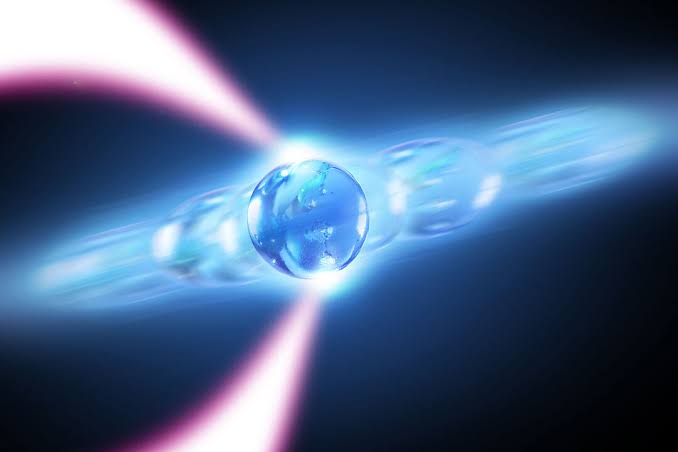Advancements in Phonon Laser Technology: A Bright Future in Sound Manipulation

In the realm of laser technology, a groundbreaking innovation has emerged, centering on a minuscule, levitated bead as its focal point. Unlike conventional lasers that emit light, this unprecedented creation shoots particles of sound, heralding a new era in the manipulation of acoustic waves.
Similar to how light comprises individual particles known as photons, sound is composed of discrete units called phonons. Over the past few decades, scientists have endeavored to develop “phonon lasers” capable of emitting these particles in a focused beam, akin to the emission of photons by optical lasers.
Recently, a team led by Hui Jing at Hunan Normal University in China has achieved a remarkable feat by crafting the brightest phonon laser to date.
At the core of their groundbreaking device lies a silica bead, measuring approximately a micrometer in length, akin to the size of a typical bacterium. Employing two beams of light, the researchers levitated the bead and encased it within a reflective cavity. Any slight vibration of the bead generated phonons, which were subsequently trapped and amplified within the cavity. This process continued until a sufficient accumulation of phonons resulted in the formation of a laser-like beam.
While similar designs had been explored by several research groups previously, Jing and his team introduced a pivotal modification: an electrode positioned directly beneath the bead. This addition facilitated the generation of meticulously tailored electromagnetic signals, thereby enhancing the laser’s “brightness” – the power output at each phonon frequency – by a factor of ten. Furthermore, it enabled the beam to achieve greater precision and longevity, with the latest phonon laser capable of operating for over an hour, a significant improvement over earlier iterations that typically functioned for mere minutes.
Phonons exhibit reduced susceptibility to interference when traversing through liquids, rendering them potentially more effective than traditional lasers for applications such as biomedical imaging of watery tissues or deep-sea monitoring devices, as noted by Jing.
However, Richard Norte at Delft University of Technology in the Netherlands cautions that existing experimental setups necessitate intricate calibration of each component, posing a significant challenge. He suggests that the realization of the full potential of phonon lasers may require extensive research and engineering efforts spanning several years before they can rival the versatility and efficacy of their optical counterparts.
While the prospect of phonon lasers has generated considerable excitement owing to the transformative impact of optical lasers on modern society, it remains to be seen whether they will achieve a comparable level of significance, concludes Norte.
In summary, the advent of phonon laser technology represents a remarkable stride towards harnessing the power of sound for diverse applications. As researchers continue to refine these innovations, they hold the promise of revolutionizing fields ranging from medicine to underwater exploration, ushering in a new era of sound-based technology.


